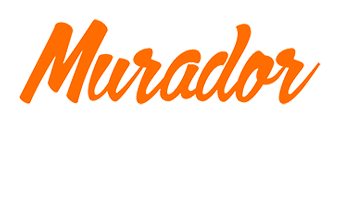- Requesting assistance only if assistance is actually required
- Doing just work at a moderate pace without rushing or using a lot of time to perform
Action 5: Recognize the present phase of learning.
Before teaching an alternative behavior, we have to figure out in which the replacement behavior fits to the pupil’s repertoire of abilities. Thinking back again to typical ideas about behavior, students may well not show a proper behavior if he does not discover how, if he understands just how to in certain surroundings not other people, or if he doesn’t always have the inspiration. Keep in mind that teaching behavior is like teaching a scholastic ability. In case a pupil isn’t taking care of their addition sheet during mathematics course, he then may well not understand how to do addition, he might need assistance with particular actions, or he might not require to accomplish the sheet. With regards to the pupil’s level of skill, the trained teacher may show addition, offer assistance, or offer an incentive. Consider: Is any element of this behavior currently in his/her repertoire?
Examples in repertoire:
- Can he show element of this ability?
- Can he show this ability with assistance?
- Can he show this ability any place else?
Then look at the stages of learning. Pupils master all abilities, both behavioral and academic, through the stages of learning.
Acquisition includes new abilities, such as for instance a kindergarten pupil being shown for the very first time to raise his hand become called upon. Fluency includes previously taught abilities that the snapsext delete student has to efficiently perform more, such as for example a pupil whom nevertheless matters on their hands whenever incorporating. Repair includes formerly taught abilities that the pupil can regularly perform under comparable circumstances, such as for example separately reading a few publications within the exact same reading degree. And generalization includes formerly taught abilities that the pupil is able to do in a number of circumstances, such as for instance making use of reading comprehension abilities to read through publications, mags, papers, and web sites.
Phases of learning:
- Acquisition: Learning the selected skill that is new
- Fluency: Using the chosen skill faster or better
- Repair: utilizing the chosen ability routinely
- Generalization: Making use of the chosen ability in various places whenever it really is needed
Techniques for Phases of Training:
During purchase, the instructor should introduce the ability making use of examples, offer sufficient training possibilities, and proper mistakes soon after they happen. Once the pupil can correctly perform the skill with aids of all possibilities, he then is able to go on to the fluency phase.
During fluency, the instructor should offer training possibilities while gradually prompts that are decreasing help.
Once the pupil can independently perform the skill of all possibilities, he could be prepared to relocate to the upkeep phase.
During maintenance, the instructor should offer training opportunities and monitor the student to affirm that they can perform the ability separately with time. As soon as the pupil regularly does the ability in the long run, he then is preparing to go on to the generalization phase.
During generalization, the instructor should offer possibilities for the pupil to rehearse the ability with various individuals, various materials, or perhaps in various places. Whenever pupil can perform the skill independently in different circumstances, then your pupil has learned the ability.
- Acquisition: show with examples and correction that is error
- Fluency: Decrease prompts and help
- Repair: Practice ability separately
- Generalization: Practice ability with various individuals, various materials, or in various places
Action 6: Determine the degree of help.
Next usage the identified phase of learning to figure out the amount of help necessary to demonstrate the behavior that is new. Ask yourself: exactly just What supports does he need certainly to demonstrate this ability?
Types of aids:
- Does he require assistance?
- Does he require support?
- Is he doing the ability properly?
Forms of Support*
Encourages, mistake modification, and reinforcement are three kinds of help.
Utilize most-to-least prompts for acquisition abilities. A good example of most-to-least prompting during handwriting is always to start by having a pupil trace their letters and, because the pupil advances, have him/her write the letters rather than tracing. Utilize least-to-most prompts for fluency and upkeep abilities. A typical example of least-to-most prompting during reading will be first let the pupil to try and appear a word out then provide assistance if she/he becomes stuck. Error correction may be used at any stage each time pupil makes a mistake. The instructor should stop the tutorial or practice, shortly review the ability, then offer extra practice possibilities. Reinforcement may be used in every phases to boost pupils’ inspiration to complete work or act accordingly. Instructors can reinforce their pupils giving praise, privileges, or rewards that are small.
Encourages:
- Most-to-least prompts whenever teaching skills that are new
- Least-to-most prompts for strengthening existing skills
- Visual aids through image or schedules
Error modification:
- Stop
- Re-teach
- Training
Reinforcement:
- Praise usually whenever teaching additional skills.
- Praise intermittently when strengthening skills that are existing.
- Utilize tangibles such as for instance tokens or sticker which is often exchanged for a award.
* Read more about kinds of help into the Classroom Management module with this web site.
